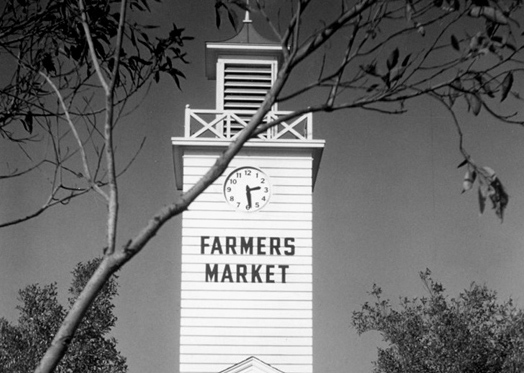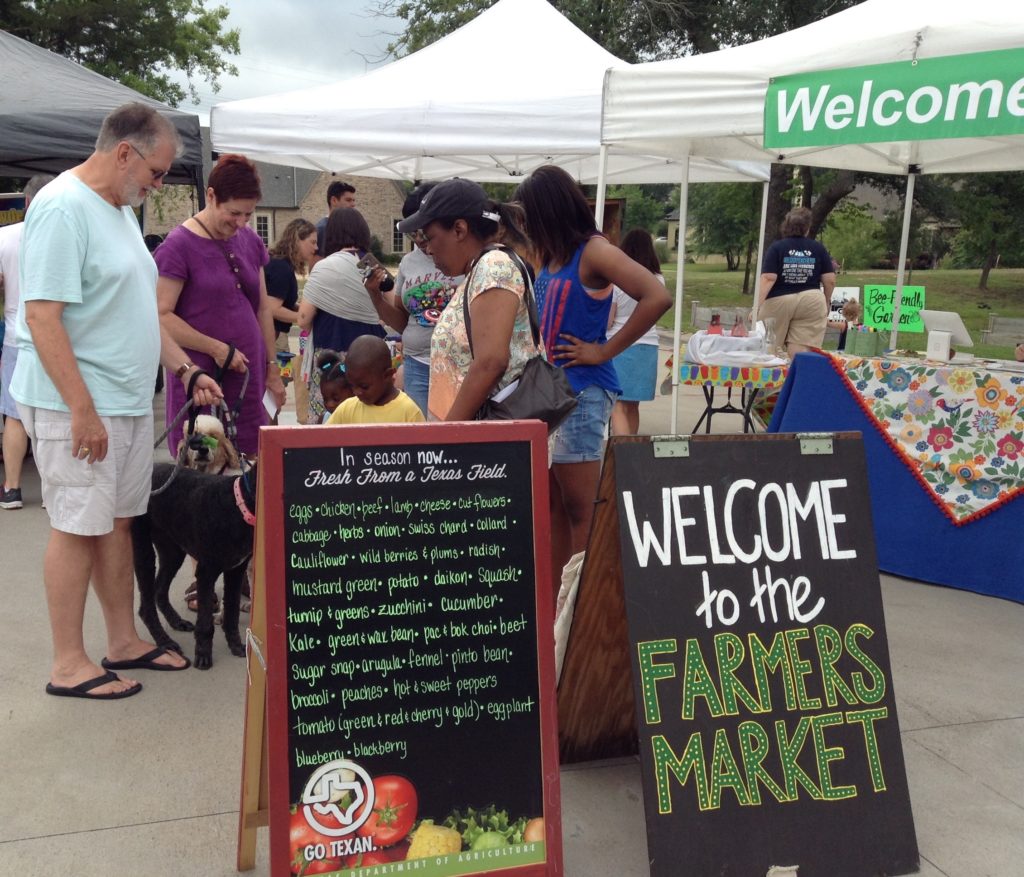
Farmer’s Markets in Texas
Farmer’s Markets!! Don’t we all just love going down to our local farmer’s market and getting our sprouts and local eggs and home-grown tomatoes? These days it is so easy, and, well…normal. Farmer’s Markets are ubiquitous, an essential cog in the “know what you eat” movement.” Buy local, talk to the people who grow your food, pay attention to what goes in your body.
Ubiquitous they might be today, but in the late 70s, farmer’s markets had practically disappeared from America’s roadside. The USDA counted only 541 in the nation in 1976, a number so pitiful that it inspired an act of Congress to try and save this endangered species. The Direct Marketing Act of 1976 made direct marketing a legitimate activity of Cooperative Extension of USDA, freeing county agents to work with farmers and local markets.
However, down here in Texas, federal laws don’t amount to much. And nothing much happened in Texas until Jim Hightower was elected in 1983. He roared into office with a goal of improving family farmer’s opportunities to make a living. Farmers Market was seen as a tool to provide more of the value of the produce to the farmers and less to the dreaded middleman. It also provided healthier, tastier, and more nutritious produce to the good citizens of Texas.

But Farmer’s Markets in Texas didn’t just spring out of the earth like mushrooms, which, I might point out, that now, thank the heavens and Hightower, a wide variety of mushrooms of different tastes and shapes and medicinal properties are available at those ubiquitous farmers markets.
Farmer’s Markets needed to be marketed and sold. The Texas Department of Agriculture in the 80s did just that. The TDA was concerned with the survival of the family farm, the numbers of which were dwindling rapidly. A Marketing Department was created to help small family farmers find markets, create new markets and take a higher percent of value of old markets.
Within the Marketing Department, a division devoted to creating and marketing farmer’s markets was created.
Robert Maggiani, in a recent interview with People’s History in Texas, explained the program. “Gus [Townes] was the director of a program at that time called direct marketing, which was new for the agency, new for the Department of Agriculture and in our world epitomized what Hightower was trying to do with the agency, help Texas farmers and ranchers really take advantage of different market opportunities.”
“Back when Hightower started as you remember there were hardly any farmers markets in Texas. Then he really put some staff, put some institutional effort into doing that. All of a sudden after his eight years there was hundreds of them working very well. Eventually the Agriculture Commissioners that followed him decided that it was a good idea to keep them going and try to spend some energy to make them stay healthy but just the whole presence of farmers markets is an example of direct marketing.”
Gus Townes, when first interviewed, was dubious about the effort. ‘I don’t know who they think they’re fooling, but no state agency is going to do the kind of stuff that [Hightower] was talking about because people are not going to allow it, you know, the powers that be. So I guess I waited a little too long to decide, because the next person I heard from was Hightower himself. We talked for a while and after I got off the phone, I sat there for a while and said, ‘Damn! He is serious about this shit.’”
Gus determined that Tyler was destined to be the first effort. “I had Leroy [Biggers] put the first one together. When we got there, that farmers market only sold roses. That’s a big rose-growing area up around Tyler. So that farmers market deal mostly with roses. So I asked Leroy, what can we do to bring farmers’ products in here? You got farmers up there, not growing enough product to go to the wholesale, but too much for retail. It seemed to me like we could get some of these guys in; they could even sell some of the high- volume stuff after a while. But he started working on it I guess after about six months he had about 30 farmers who said they will be willing to bring their products together. So we opened the next year, the Tyler Farmers Market.”
It took quite an effort by Leroy Biggers to convince everyone—everyone except for the farmers. Mr. Biggers explained in a recent interview with PHIT. “I had contacts with people in town. Back then we had a farm and ranch show every morning on the local station called the Horace McQueen Show. I was good friends with Horace. I was also a member of the farm and ranch club and in fact, at one time, I was on the board. The main thing to setting up a direct farmers market is location. We had a fair ground here. It was centrally located. I talked to the manager of the fairgrounds. I said, ‘I’d like to set up a farmers market. If we can get the producers, if we can get the structure set up, an organization formed, can we use the park fairgrounds?
“He wasn’t that optimistic either. So you had to appeal to him in a monetary manner. I said to him ‘When we assess our fee, we’ll assess a certain amount of the fee to go to the fairgrounds park.’ But John still wasn’t sold on it. So we had a meeting and we had about 15 to 16 producers in East Texas to show up for the meeting and explain to them what we was trying to do. But then I went on the Horace McQueen Show and advertised it and promoted it. We opened up on the Thursday, and we had 75 producers to show up to sell directly. On Saturday we had 100 and something. And we had the news media there, it got good coverage. It operated on Tuesdays, Thursdays and Saturdays. It still works today.”
In three years, the TDA had 125 markets up and running.

Part II will discuss the economics of why farmers markets are a great deal for family farmers
by Richard Croxdale